Reasons to Choose Jalousie Windows (Types & Pros and Cons)
Jalousie windows made their debut in the early 1900s but weren’t popular until the 1960s when they were often seen in the southern states. The windows were perfect for enclosed porches and sunrooms, and anywhere space was limited, but ventilation was needed.
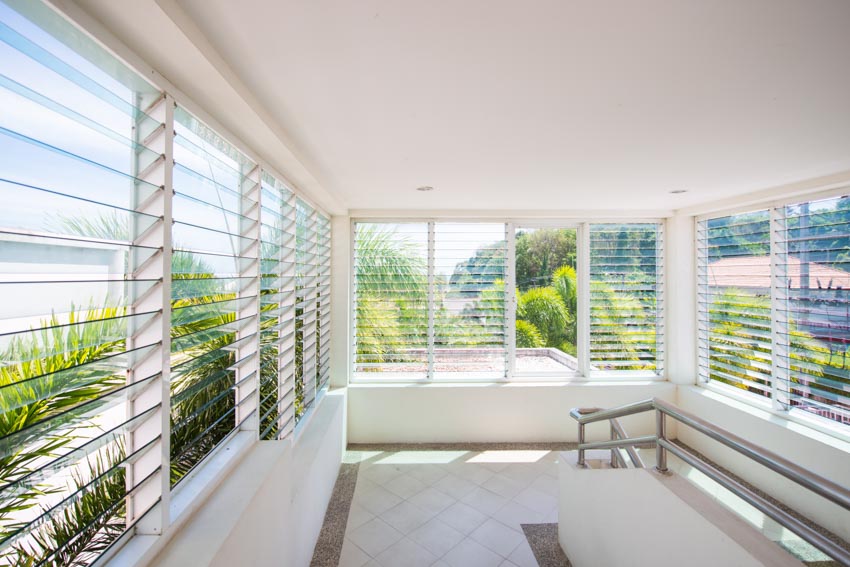
Jalousie windows also gained popularity in mobile homes and trailers with no air conditioning that needed a way to provide ventilation while saving space.
These slatted, louvered windows have horizontal panels, typically made from glass, that catches breezes and let outside air flow inside homes and trailers. Jalousie windows are very popular in Hawaii, where refreshing trade winds and a perfect climate provide the ideal environment for these slatted windows.
Jalousie windows are not suitable for northern climates because they lack insulation and do not completely seal. Locations with colder climates may use jalousie windows in sunrooms and enclosed patios and porches.
What Is A Jalousie (Louver) Window?
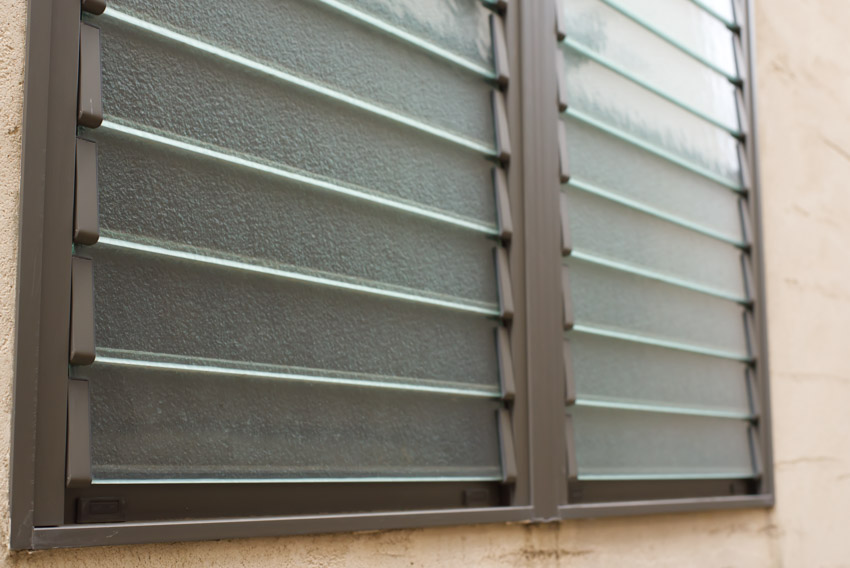
Jalousie windows resemble and work much like plantation shutters. The horizontal slats, or louvers, are made from glass, wood, metal, plastic and other materials, sit snuggly in a track attached to the window’s frame and are opened and closed with a hand crank.
The slats are layered and, when closed, provide privacy and prevent airflow on cold days. Turning the crank causes the slats to tip up and out in unison, creating an opening between them to let in air. When the slats are fully open or fully horizontal, they provide a view of the outside.
If you prefer to keep your windows open during a storm, Jalousie windows work similarly to an awning window. The slats, depending on how much you open them and what direction they tilt, provide protection from rain and snow while letting the cool and aromatic air inside.
Unlike single and double-hung windows, jalousie windows use the entire window opening when letting airflow inside. Single and double-hung windows only allow half the window to be open at one time.
What Is The Purpose Of the Louver Design?
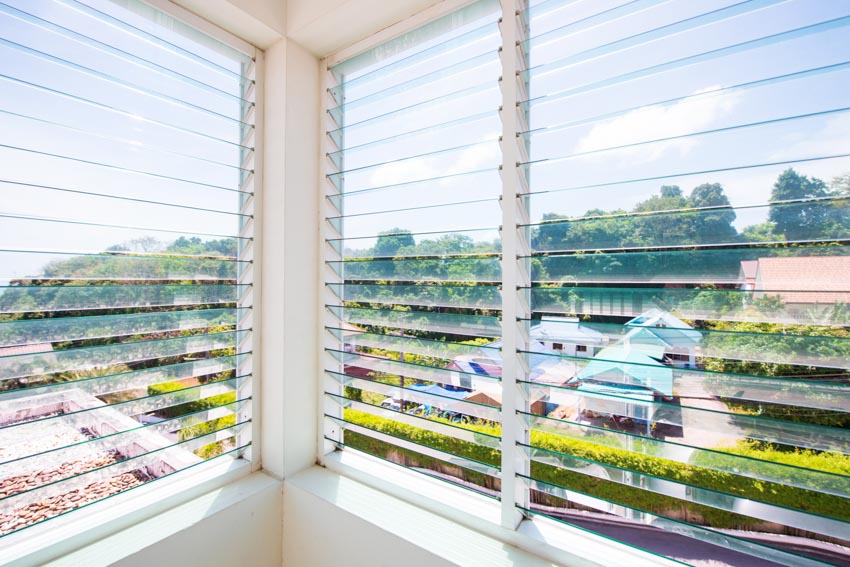
Jalousie windows originated with the need to ventilate homes in the sweltering heat before air conditioning was available.
These versatile louvers also allow for the best use of a window opening when there is a lack of space in a stick-built or mobile home. They also make great ventilating windows for most types of sunrooms and gazebos.
Jalousie windows can add aesthetic design features to any home or business. They have a style of their own and relate back to the southeast with hot, humid days that, at times, provided no breeze at all. Jalousie windows were the best way to catch whatever air there was to cool off the inside of a home.
For several reasons, large buildings used as warehouses, factories, and manufacturing companies are commonly equipped with jalousie windows. Jalousie windows bring a lot of fresh air into a building.
When automated through a control system, they can open and close according to the inside temperature to save on heating and air conditioning. The automated system also responds to smoke and fire detection, opening during a fire in the building to let out the excess heat and smoke.
Many people remember seeing storm doors made from jalousie windows with either the top half of the door made with jalousie slats or a whole door of slats. The superior ventilation could move air through a house with a jalousie window door in the front and the back of the house. Glass slats also provide light and could be fitted with UV sunlight protection to prevent excess heat on hot summer days.
Jalousie Window Types
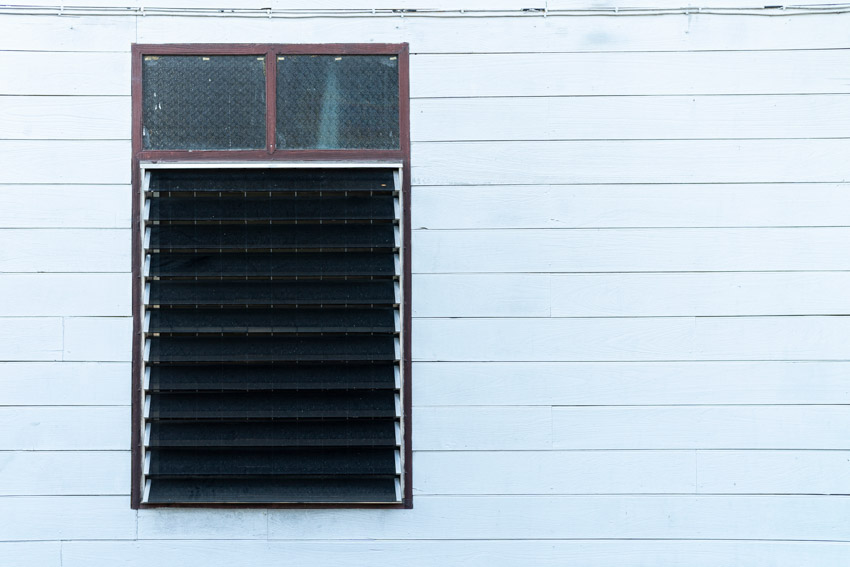
It’s easy to modify the style and function of jalousie windows by changing the slats. Slats are made from glass, wood, metal, plastic, acrylic, aluminum, or vinyl and allow for variations of color and texture. Glass slats come with frosted and tinted designs, and solid materials provide privacy.
The windows take on completely different looks when the slats are replaced for an enclosed porch or as kitchen windows at a beach house.
The slats unhook easily and slide out of the frame to easily change out for other materials. The only restriction is the width, length, and height matching the frame measurements.
The hand crank mechanism on jalousie windows provides leverage and makes it easier to open for people who may not have a lot of strength.
Jalousie windows also come automated and can be opened and closed by programming or use of a remote.
Jalousie Glass
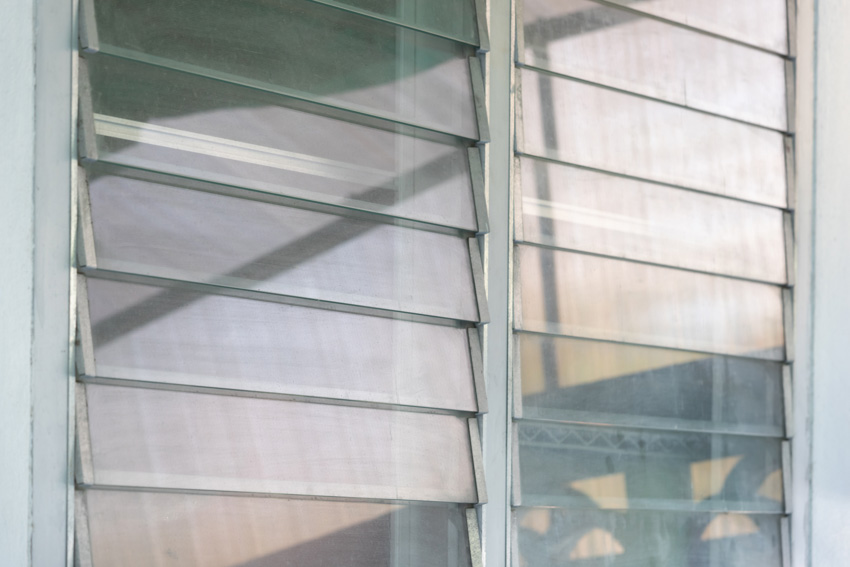
The glass slats for jalousie windows come in two standard window sizes, 4 inches and 6 inches, with varying lengths and thicknesses.
When purchasing jalousie windows or glass replacement slats, check whether the glass is tempered for added strength and break resistance.
Not all slats are automatically made with tempered glass. Frosted glass or glass with a texture works well for areas in a home that need privacy options such as bathrooms and bedrooms.
Glass slats with UV protection are a good choice for south-facing sides of your home that receive a lot of sunlight.
Jalousie Style Window Pros and Cons
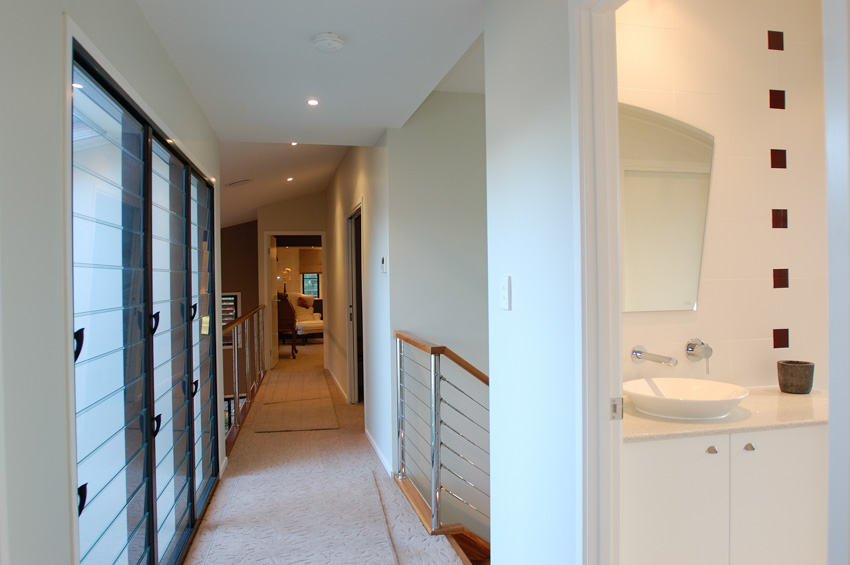
Here, we share the different pros and cons of jalousie windows
Pros:
• Low maintenance
• Superior ventilation
• Easy to open with a crank handle or automatic controls
• Provides levels of privacy adjusted by how the positions of the slats
• Lets in a lot of light
Cons:
• Not suitable for homes with central air conditioning due to the slats not creating a tight seal
• Not suitable for cold climates due to the lack of a tight seal
• The hardware allows for easy panel removal from the outside, making the windows a security risk.
• They often have no screens and offer no protection from insects, or they require a frame outside the window that is far enough away to not interfere with the opening operation. (No screen cleaning at the expense of insects getting in.)
Shortly after their debut, this window type lost its popularity with the advent of central air conditioning and heating. They also presented too much of a security risk.
However, manufacturers are now designing and offering jalousie windows that seal better and have security options, making the slats challenging to pry apart.
How To Secure These Windows
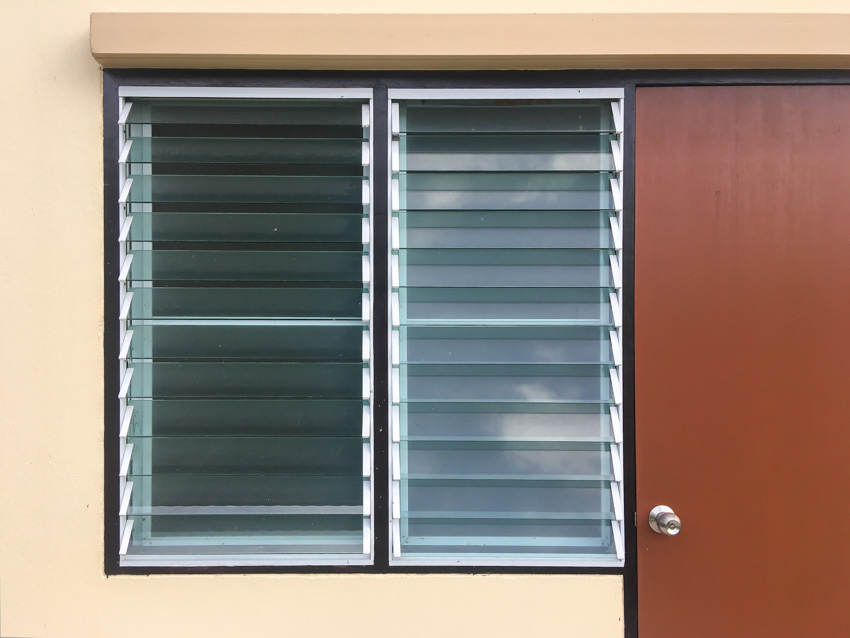
Newer jalousie windows are made with a slat holder that prevents the slats from being removed when they are in a closed position. But, if you have older jalousie windows, there are several ways to make them more secure.
• Many hardware stores sell an S-ring or S-hook to prevent glass panel removal
• Louver lock kits are sold to secure glass slats on jalousie windows
• Jalousie window security clips have a high-tension spring. They are clipped under the louvers to prevent removal and act as types of window locks.
• Safety suggestions also include using epoxy glue or a silicone sealant to glue the glass slats to the metal frame
How To Clean Louver Style Windows

The best and easiest way to clean these windows is by removing all the glass slats for cleaning. If left in the frame, the dirt will drip onto the slats below, creating a mess.
Below are the steps to cleaning your jalousie window glass slats.
• Prepare a large bin of warm water with detergent.
• Tilt the slats at a 45-degree angle and remove each slat one at a time. Remove five to ten slats at a time only.
• Lay the slats in the soapy water and let sit for 15 minutes.
• Use a microfiber rag to wipe the dirt off each slat.
• Rinse each panel with clean water.
• Lay the slats on a large towel.
• Using a clean microfiber cloth, wipe both sides until dry. Do not use tissue or paper towels, as they will leave tiny fibers. Lay the slats out to completely dry before putting them back into the frame.

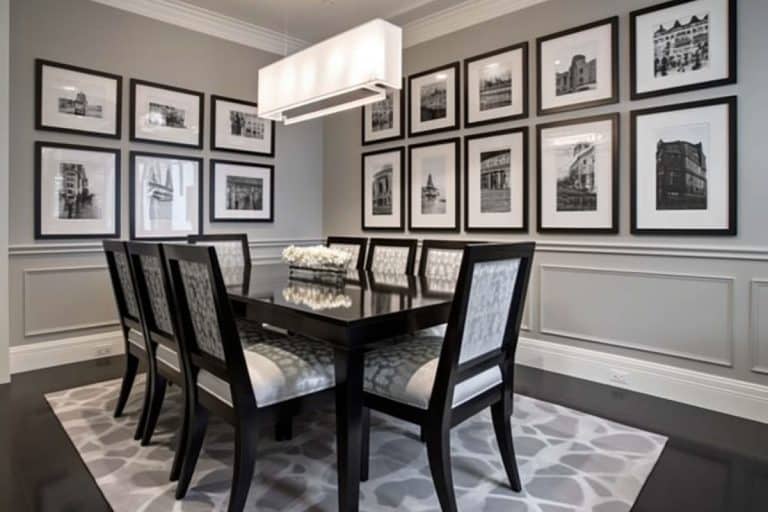
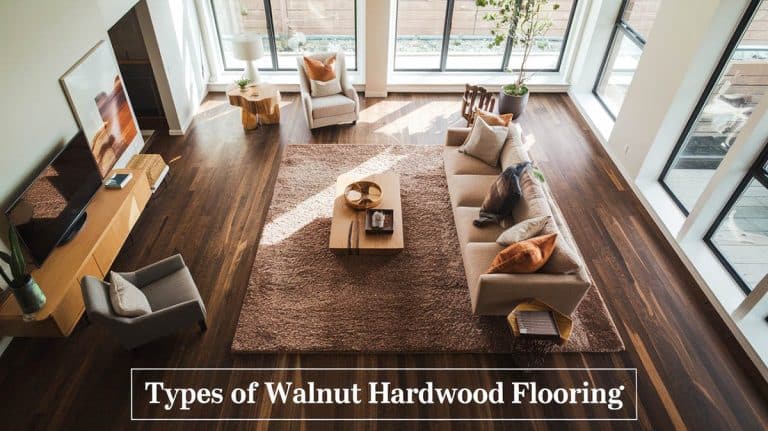
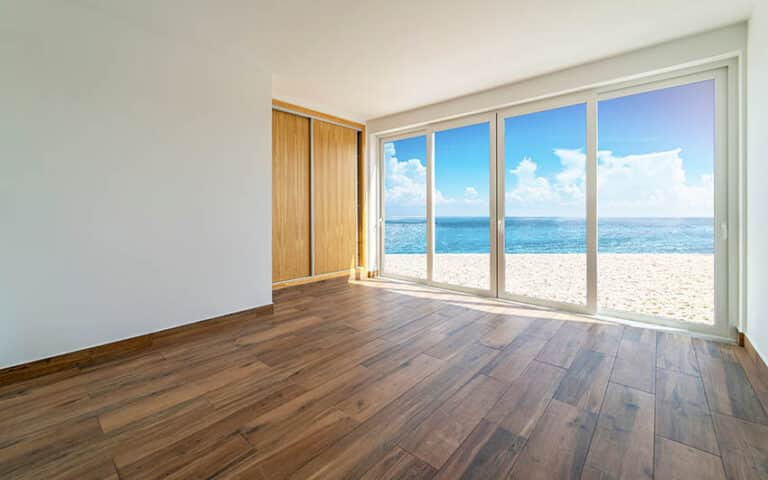

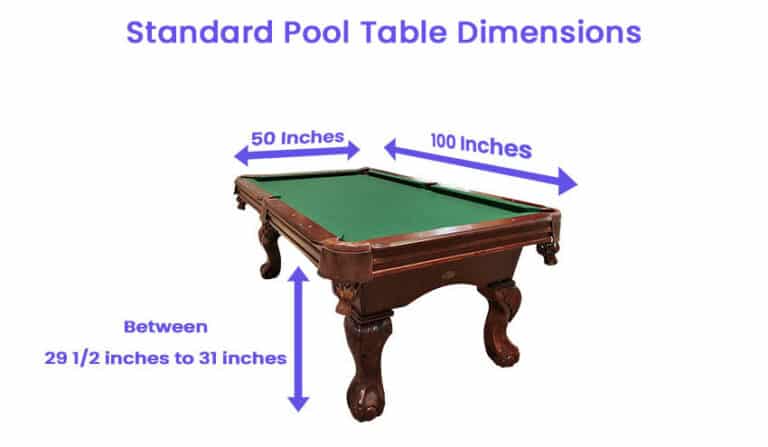
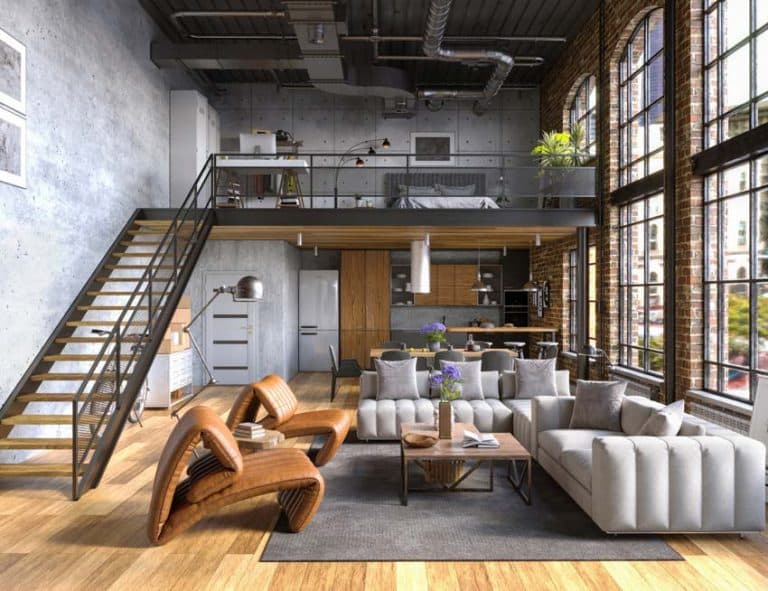
Extremely helpful article. Trying to decide on this window or screens for a summer porch. This made the decision easy and I thank you for that.
Could you share your resources for buying these? I’m having a hard time finding some to do an interior wall. Thank you in advance.